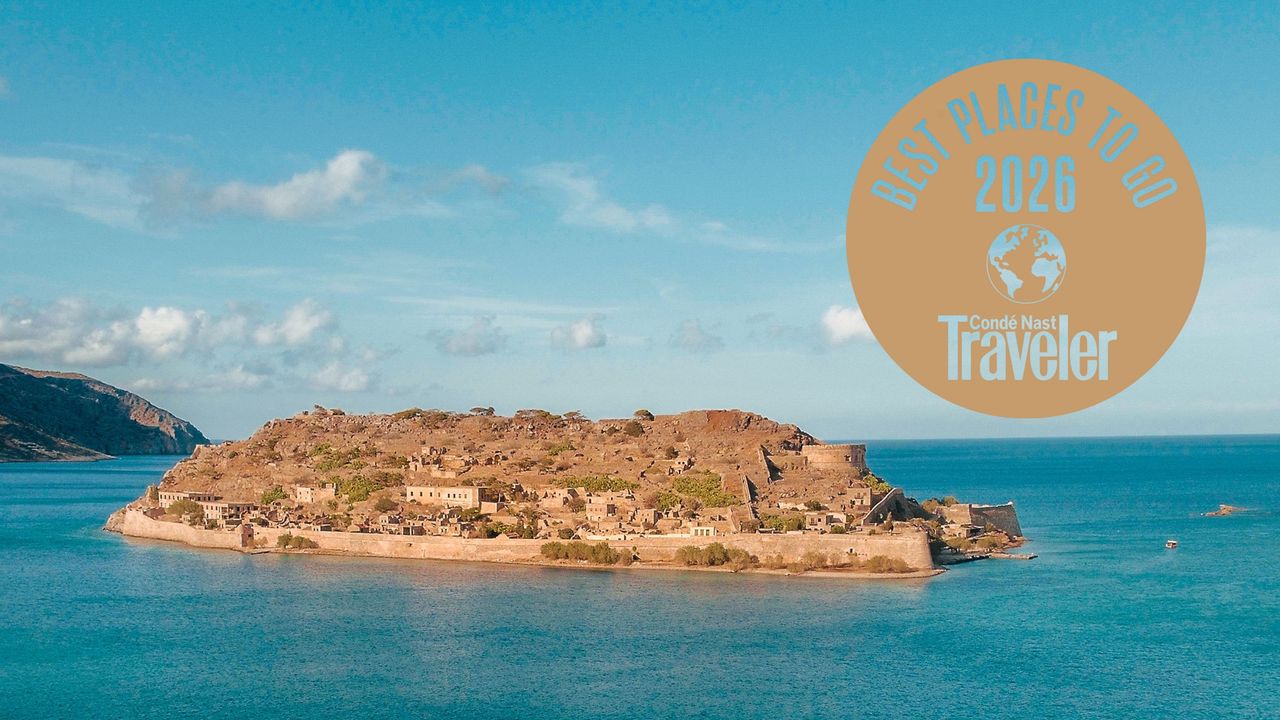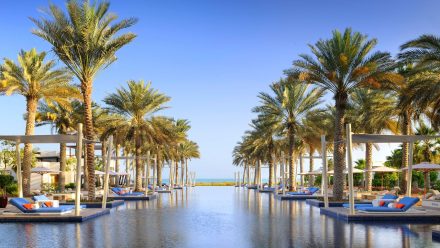As we edge closer to the end of each year, we begin to look ahead to the destinations we’re most looking forward to visiting (and recommending to you, our fellow travelers) for the following 12 months. We’ve asked our expert contributors from all around the globe to nominate the spots that are on the up—the places that are on their radar thanks to a flock of hotel openings, major cultural moments, talk of new flight routes, or concerted conservation efforts taking root. These nominations make up the Best Places to Go in 2026—the places worthy of your precious annual leave and hard-earned spending money.
For the second year running, in addition to turning our gaze to global destinations in the Best Places to Go in the World in 2026, we’re also looking to the spots that are making waves on each continent right now. This list is an edit of Europe’s countries, regions, cities, and neighborhoods that are deserving of your time and attention this year.
All 10 destinations are places we’re keeping a keen eye on right now: from new hotel openings in Seville, to hiking to see art on the slopes of Slovenia, and Frankfurt leading the charge in the design world. Happy travels. —Olivia Morelli
This is part of our global guide to the Best Places to Go in 2026—find more travel inspiration here.
The Best Places to Go in Europe in 2026
Brussels, Belgium
Go for: creative inspiration and cultural revival
This often-overlooked European capital is having a cultural moment, signaling a shift from a bureaucratic hub to a creative powerhouse. The opening of Kanal—Centre Pompidou in November 2026 transforms a long-dormant factory into a contemporary center for modern arts. One of Europe’s highly anticipated arrivals, it will feature expansive exhibition spaces curated with Paris’s Centre Pompidou, alongside a dynamic program of live performances, music, film, workshops, a library, and—five floors up—a restaurant overlooking the vast showroom, capped by a rooftop bar with panoramic city views. Just steps away is newly opened The Standard, with a rooftop bar, greenhouse-style lounge, and bold design that mirrors the city’s creative energy.
Brussels’s cultural revival is visible everywhere, from the refreshed façades of Place de la Bourse to the Dome Project, a restoration of Belgium’s first department store with modern flair. Nearby, the Gare Maritime, a former freight station, now seamlessly blends sustainable architecture with design fairs and chef-led food stalls. Plan a spring visit, when Art Brussels draws galleries and collectors from around the world for a vibrant international fair, and the biannual Zinneke Parade transforms the city’s streets into a stage of theater and imagination. For those seeking more adrenaline, base yourself in the city for the Belgian Grand Prix to marvel at the sporting spectacle. —Adriana Falisova
Crete, Greece
Go for: authentic lifestyle on the country’s largest island and the European Region of Gastronomy for 2026
Since it’s home to the health-boosting Cretan diet, and to wine production that dates back to the Bronze Age Minoans, it’s no surprise that Greece’s megalo nisi (big island) is next year’s European Region of Gastronomy. Locavores way before the term was trendy, Cretans love to forage for their supper: askolimbi (golden thistle) whose roots taste like artichoke, kochlioi (snails) swimming in a garlicky sauce, or vlita (wild greens) lightly steamed and dressed with sea salt and fresh lemon juice. These are just some of the scintillating, yet simple, dishes showcased in the week-long Cretan Diet festival that will be held in the Venetian-fortress-topped town of Rethymnon in July 2026.
Keen to celebrate the island’s culinary flair, a raft of new hotels, with gourmet restaurants, are also opening their doors. Ikos Kissamos, the brand’s first Cretan resort, promises seven stunning restaurants with menus crafted by Michelin-lauded chefs. Housed in a sumptuously revamped former soap factory, hyper-chic urban retreat Niko Seaside Resort MGallery Crete plans to dish up locally sourced fare, while scenic views of former leper colony Spinalonga will be the backdrop for a raft of unique farm-to-table culinary experiences at Greece’s first Rosewood in jet-setter hideout Elounda. The soft launch of the island’s new airport—replacing the old one, which is regularly voted “Europe’s worst”—will be the icing on the island’s drool-worthy cake. —Heidi Fuller-Love
Frankfurt am Main, Germany
Go for: the World Design Capital 2026, new hotels, and a Jewish Academy
Best known as Germany’s financial hub and a skyline that has earned it the nickname “Mainhattan,” Frankfurt am Main is far more than banks and trading floors. This is a city of contrasts that fit together with surprising charm: a metropolis where local dialect is still spoken, a global city in pocket format. Not entirely walkable, yet compact. Polished, but never too polished. Sometimes a little rough around the edges. Home to Goethe and birthplace of the techno scene, it blends urban energy with Hessian conviviality, and today has one of the country’s most exciting food cultures.
The perfect moment to experience it will be 2026, when Frankfurt steps onto the stage as World Design Capital under the banner “Design for Democracy.” More than 2,000 events will animate the city, from the banks of the River Main to neighborhoods that have reinvented themselves in recent years—such as Osthafen, once industrial land, now a lively quarter. Neue Altstadt, opened in 2018, is a once-in-a-century architectural project, where painstakingly reconstructed half-timbered houses stand alongside contemporary buildings in a strikingly harmonious whole. At its heart is the Römer, the city hall since 1405 and a symbol of democracy, fronted by the ornate Fountain of Justice, which once flowed with wine during coronations.
The dialogue between past and present will also be on show in 2026 with the opening of the Jewish Academy. A new center for education, exchange, and culture in the Westend district, it will be a landmark project for Germany’s Jewish community, which has shaped the city economically and culturally and remains deeply rooted here. In July 1950, just five years after the Holocaust, the Central Council of Jews in Germany was founded in Frankfurt.
Travelers can also check out a glittering trio of new hotels. Kimpton Frankfurt and The Florentin (formerly Villa Kennedy) bring a fresh dose of boutique character, while the iconic Grandhotel Hessischer Hof is set to return under the Taj banner by the end of 2025. —Words by Isabelle Braun, English translation by Lena Elster
Islay, Scotland
Go for: whisky, whisky, whisky
The first distillery opened on Islay in 1779, and nearly 250 years later the peat-cut island is setting the whisky world alight once more, as though in the process of remaking itself. Openings are rare in the Hebrides, but 2026 brings a raft of exciting spots for lovers of the “water of life.”
Nowhere is this thrilling shift more feel good than at Laggan Bay Distillery, the 12th whisky house on the island. Due to open in late 2025 near the toffee-colored Big Strand, the island’s longest beach, this launch from the brains behind Edinburgh Gin and Glengoyne could be the most newsworthy story of the year. That is, if it weren’t for the arrival of a second distillery—Portintruan, which will soon be up and running outside Port Ellen on Islay’s south coast.
Add to this picture newly opened Ardbeg House, from French luxury empire LVMH. The sooty maritime single malt once represented the darker side of Islay whiskies, but now Ardbeg represents opportunity and optimism. The brand’s 12-bedroom boutique residence in Port Ellen is somewhere to eat, drink, and unplug, with kaleidoscopic textiles, richly detailed furnishings, and design that’s pushing the limits of luxury on the island. No one in the world of whisky has seen anything like it in years. —Mike MacEacheran
Milan, Italy
Go for: winter wonders and box-fresh hotel stays
Milan has long been misunderstood and underestimated, but the Lombardy capital charts its own course, delivering everything a city lover could possibly want: nuanced culture, rich heritage, inventive restaurants and cocktail bars, and a bursting dynamism only set to grow in 2026.
From February 6th to 22nd, Milan will co-host the Winter Olympic Games with Cortina d’Ampezzo. The Games are poised to be the most widespread in history, spanning 8,500 square miles between the two hubs and their outlying venues. The 2026 Games will also be the most gender-balanced winter edition in history, with 47% female participation, while sustainability remains at the forefront. Initiatives include 100% renewable energy, the use of 11 (out of 13) existing or temporary venues and an Olympic Village, outfitted with solar panels, rainwater harvesting, and urban farming, which will be repurposed into student dorms.
From April 22nd to 26th, design devotees will descend on Milan for the 64th edition of Design Week, or Salone del Mobile, the world’s largest furniture fair. Fuorisalone, the city-center offshoot, unfolds through hundreds of courtyards, galleries, and showrooms rooted in a unifying theme. As 2026’s theme, Be the Project will aim to bring sustainability and social impact into focus, expanding on last year’s Connected Worlds, which explored AI and digital interconnectedness.
But sports and design are hardly Milan’s only draw. In 2026, a trio of five-star hotels will open. In the Quadrilatero della Moda, the golden rectangle delineating the upscale fashion district, two 19th-century palazzi will house the 70 guest rooms of Rosewood Milan. Six Senses will debut a short stroll away in the Brera, set in a post-war rationalist building with 68 guest rooms, including 15 suites (two with plunge pools), a spa, rooftop bar, and sky pool. A short stroll from Piazza del Duomo, Mett Milan will claim the top nine floors of the Torre Velasca, a 26-story 1950s skyscraper with a protruding top reminiscent of a medieval watchtower. Adding to the mix, Soho House is also set to arrive, transforming the 1930s Cinema Arti into a creative club and accommodation of more than 50 rooms, along with a rooftop terrace and pool. —Jaclyn deGiorgio
Saint-Gervais-les-Bains, France
Go for: sustainable train travel and sweeping Haute-Savoie views
In 2026, Saint-Gervais-les-Bains, in Haute-Savoie, is taking a big step towards rewriting what Alpine tourism can look like. The Mont Blanc Express, the century-old railway that winds between Saint-Gervais-les-Bains’s Le Fayet and Martigny, will unveil a new fleet of energy-efficient trains in the summer. For a line first electrified in 1908, it’s a symbolic upgrade: proof that sustainable travel is no longer a side story in the Alps, but the way forward. The new trains will double capacity, cut emissions, and ease car traffic in the valleys, while strengthening the cross-border links that have always defined this region. From 2026, the Léman Express from Geneva will also expand services, making it easier than ever to arrive in the Mont Blanc foothills entirely by rail.
In the Belle Époque spa town, innovation is already reshaping daily life. Launched in 2024, Le Valléen gondola is the first in France to connect a mainline SNCF station directly with a mountain resort center. In five minutes, it whisks passengers from Saint-Gervais Le Fayet station to the town center with sweeping views over the Bonnant gorge, cutting traffic and linking directly to ski lifts. From the same station, the Mont Blanc Express runs up the valley to Chamonix.
The famous Alpine town adds to the story in 2026 with the opening of the Glaciorium, a glacier and climate center at Montenvers—a timely reminder of why these greener choices matter. Together with Saint-Gervais, this corner of Haute-Savoie feels less like a nostalgic ski destination and more like a region reimagining its future—proving the Alps can still thrill, while treading more lightly on the mountain. —Katilena Dartford
Seville, Spain
Go for: new food entrepreneurs and luxury hotel openings
Casa Orzáez, Sr. Cangrejo, Leartá, Barra Baj: these are just a few of the names representing Seville’s new cuisine—and its new lease of life. Although it’s perhaps the most beautiful city in Spain, Seville has had reputation for being not very disruptive and sometimes quite old-fashioned, but that’s changing fast. The city is jam-packed with young, enterprising chefs we’ve been keeping an eye on, who look ahead with a focus on innovation and ingenuity, without losing sight of tradition. But because no one wants to miss out on the classic Seville experience, iconic restaurants such as Cañabota, Jaylu, Casa Ruperto, and Yebra shouldn’t be overlooked. Adding to the culinary momentum is a new cohort of cocktail bars: Naked and Famous (yes, in English), Plácido y Grata—which is also a charming hotel—and Tremenda Muela are a few examples. The night is long and exciting in the new version of Seville.
Hotels are also opening in quick succession and international brands, in particular, are betting on the city, which will soon rank as the third most significant luxury destination in Spain (after Madrid and Mallorca). Among the recent arrivals turning heads are cozy La Casa del Limonero, Querencia de Sevilla by Autograph Collection, and Cristine Bedfor (the third—and chicest—hotel from one of the coolest Spanish brands). Serras Sevilla will soon be unveiled in a historic building near La Giralda bell tower—and other projects already underway include Six Senses—on the Caprichosa estate in Gerena, on the outskirts of the city, which was owned by William Randolph Hearst’s granddaughter—Thompson Sevilla, on Plaza de la Gavidia; Hotel Alfonso XIII, a Luxury Collection by Marriott in a former tobacco factory; and a Kimpton in the beautiful 13th-century Convent of San Agustín. Four Seasons will touch down in 2027, occupying the Generali building in Plaza Nueva. —David Moralejo
Oulu, Finland
Go for: Arctic culture, art trails, and year-round cultural programming
Located just south of the Arctic Circle in Finland, Oulu has a lot to offer; its remote location, the purest air in Europe, a low-impact Arctic food culture and almost 600 miles of walking and cycling paths make it a reliable eco-friendly destination. But in 2026, the city will become one of the northernmost European Capitals of Culture. Under the theme of Cultural Climate Change, a series of events will focus on creative solutions to the challenges facing Europe and beyond in one of the world’s fastest-changing regions.
In winter, northern traditions are on display at Frozen People, an electronic music festival on the icy Gulf of Bothnia, and at Oulu Art Museum’s Sámi contemporary art exhibit, which showcases the resilience of Europe’s only Indigenous people (on view until May 2026). Climate Clock is a new permanent art trail opening in June with thought-provoking work by renowned artists such as the UK’s Rana Begum, set amid Oulu’s forests, and along its rivers and seashores. From May to August, the Solstice Festival will celebrate summer at a 1640-foot Arctic fell with views of pine woods and lakes, while the Summer Night’s Dinner will highlight northern ingredients at a communal table stretched along one of Oulu’s main streets.
As Finland’s tech and science center, Oulu will also play host to several innovative digital art projects throughout the year. These include the year-long Peace Machine—a multidisciplinary installation by the Finnish Ekho Collective that uses AI to brainstorm conflict solutions—and a first-of-its-kind 86,000-square-foot museum and science center opening in the fall of 2026, just in time for aurora borealis viewing in its Deep Space theater.
Travelers can take a break from culture by leaning into Oulu’s strong sauna culture (choose from wood-smoke saunas, floating river saunas, or luxury saunas). At the summer sauna festival, traditional sauna healers will offer treatments rooted in Finnish folk heritage such as birch-leaf bathing and sauna chants. Newly renovated Lapland Hotels Oulu will be welcoming guests with design-forward rooms and must-try breakfasts starting in January, and a new Scandic Go hotel will open in late 2026. —Yulia Denisyuk
The Peloponnese, Greece
Go for: movie set locations, Homeric history, and hiking trails
In July 2026, Christopher Nolan’s film The Odyssey will take viewers on a voyage to Greece’s myth-drenched Peloponnese peninsula. The Oscar-winning director shot scenes on the cinematic southwest coast of Messinia, where Homer’s epics are anchored in ancient history. Sustainability-focused Costa Navarino, home to four luxury resorts and a recent influx of restaurants run by Michelin-starred chefs, makes an ideal base for exploring the film locations. Hike to oceanside Nestor’s Cave to see where Matt Damon’s Odysseus outwits the Cyclops. Swim in Poseidon’s realm at omega-shaped Voidokilia Beach and photograph flamingos at Gialova Lagoon. Meander Methoni Castle and the nearby town of Pylos, where Odysseus’s son seeks wisdom from Trojan War hero King Nestor.
Homer’s mythical characters were inspired by the Mycenaeans, who flourished in the Peloponnese during the Bronze Age. At Nestor’s Palace near Pylos, learn about this civilization and overlook the spot where archaeologists unearthed a treasure-filled Mycenaean warrior’s tomb in 2015. This discovery rewrote our understanding of the ways Mycenaean and Minoan cultures blended to give rise to Western civilization. The tomb’s trove is on international loan for the Kingdom of Pylos exhibition in Los Angeles before returning to Athens for six months; and in late 2026, most of the artifacts will join other groundbreaking Peloponnesian finds and permanently reside in Messinia’s newly revamped Archaeological Museum of Chora.
When it’s completed in spring 2026, the 1,075-mile Peloponnese Trails network will enhance this mountainous country’s standing as a destination for outdoor fitness. Along restored mule paths, hikers can taste Messinia’s famed olive oil and visit UNESCO World Heritage sites such as Mystras near Euphoria Retreat, which will host a Wellbeing Festival in June 2026 rooted in the philosophy of ancient Greek wellness. —Keridwen Cornelius
Upper Carniola (Gorenjska), Slovenia
Go for: fairy-tale villages and breathtaking lakes
Tucked between Austria and northern Italy, Slovenia’s Upper Carniola region (also known as Gorenjska, meaning “highlands”) is a gem hiding in plain sight. About a tenth of the size of Tuscany, this northwest corner packs a stunning lineup: Julian Alps, Lake Bled, Triglav National Park, and a sprinkling of villages plucked straight from a fairy tale.
While neighboring Italy braces for shoulder-to-shoulder crowds at the Milano Cortina Olympic Winter Games, Upper Carniola’s appeal is its breathing room. Don’t expect complete silence though: 2026 is shaping up to be its breakout year. A new digital nomad visa is being rolled out, perfectly timed with a wave of cultural and hospitality openings—a cue that the country is ready for its close-up.
Summer 2026 will see Upper Carniola emerge as a destination for contemporary art lovers with the grand opening of Muzej Lah—showcasing over 800 European works lovingly collected over three decades by Igor and Mojca Lah—on the scenic slopes of Bled Castle. For wellness seekers, Kneipp NaturHotel Snovik, after a 22 million euro ($25.5 million) investment, will debut in June 2026 on the region’s outskirts, becoming Slovenia’s highest-altitude thermal spa hotel. Wellness here is rooted in tradition (see Sebastian Kneipp’s five pillars of holistic living), but with a contemporary twist.
Intimate, guesthouse-style hotels are quietly flourishing in the Julian Alps, such as five-suite Chalet Sofija, where warm hospitality, sweeping views and serious culinary chops converge. It’s no surprise, then, that nine Slovenian restaurants earned Michelin stars in 2025. Regional staple Hiša Franko retained its coveted three stars and Green Star for sustainability, cementing Ana Roš as one of two female chefs worldwide with that distinction. Meanwhile, history buffs shouldn’t miss the return of the UNESCO-listed Passion Play to Škofja Loka’s cobblestone streets after a six-year pause, with 900 locals reviving one of Europe’s oldest Baroque-era plays. —Laura Zhang
A version of this article was originally published in Condé Nast Traveller UK.






